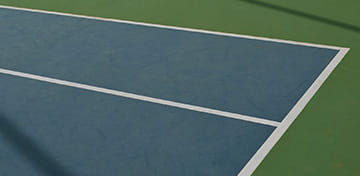The Evolution of Tennis Court Surfaces
Tennis is steeped in history, with its surfaces evolving together with the natural evolution of the game. Made of different materials, the tennis court surface area has changed over time. This significantly impacts the game’s dynamics. The origins of tennis trace back to grass courts, renowned for their association with the prestigious Wimbledon Championships.
As grass courts provide a game with low ball bounce and a relatively moderate speed, accentuating fast reactions, they are a very skill-demanding surface to play on. Tennis dynamics changed as a result of clay courts, most notably the red clay at Roland Garros.
The slower tempo and increased ball bounce were introduced by this particular surface. However, the red clay tennis court surface, made of crushed brick, generated an uneven, gritty texture that inspired lengthier rallies. With that came a more defensive style of play, which the crowd loved.
Later on, hard courts featuring asphalt or concrete brought about versatility. They offered a medium-paced game and many winner shots. Needless to say, the crowd loved that as well as this gameplay lends itself to a wide range of playing styles.
Tennis Court Surface Comparison
After the trip down memory lane, it’s time to present each surface type individually. Above all, understanding their unique characteristics, advantages, and disadvantages will be essential to understanding the game and tournaments as a spectator.
First off, it should be noted that a standard tennis court, regardless of its material, has a surface area of 2,106 square meters (or 23,697 square feet). The tennis court surface types are divided into four primary categories:
- Hard Courts
- Clay Courts
- Grass Courts
- Synthetic Grass Courts
Recognising the subtleties of each surface material is pivotal for making an informed tennis court surface comparison. It’s a known fact that tall players like John Isner and Daniil Medvedev like the speed of the harder courts.
Speaking of legendary athletes, it’s worth deviating a bit in the direction of sports betting. The best tennis betting sites in the UK make an effort to feature betting lines from hard, clay, and grass tournaments all-year long.
So, let’s start off by discussing the advantages and disadvantages of hard courts, clay courts, grass courts, and synthetic grass courts, unveiling how they influence the game:
Hard Courts
Hard courts, consisting of asphalt or concrete covered with an acrylic surface, are prevalent worldwide.
They provide medium-paced play with a consistent bounce. Events like the US Open are synonymous with hard courts.
Advantages
Hard courts, typically constructed from asphalt or concrete with an acrylic surface, offer a consistent and versatile playing experience. Their medium-paced surface accommodates various playing styles and adapts well to different weather conditions. Additionally, hard courts are known for their durability, making them a long-lasting investment.
Maintenance
Hard courts demand relatively low maintenance compared to other surfaces. Cleaning the court regularly to remove dirt and debris usually does the trick. Occasional re-coating of the acrylic surface is also needed, but not that urgent unless there’s visible damage. This maintenance is not only cost-effective but also straightforward.
Disadvantages
The faster balls on hard courts proves challenging for players’ reflexes. It is not for everyone – to put it simply. Players with quicker reactions who take the ball early usually thrive on this surface, but of course, that’s not everyone. Additionally, the high-impact surface may lead to more physical strain over time.
Clay Courts
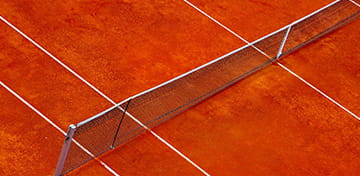
Clay courts are made from finely crushed brick, shale, or red clay. This kind of surface grants a slower pace of play, a higher bounce, and extended rallies.
That requires players to possess exceptional endurance and sliding skills to stay in the rally. One of the most renowned clay court tournaments is the French Open.
Advantages
Firstly, the slower pace of play on clay allows players more time to react and strategise. If you are anything like the genius of our time, Rafa Nadal, you are going to like that. What’s more, this is an excellent surface for developing shot-making skills. The high bounce allows players to improve their defensive abilities.
Maintenance
Maintaining clay courts requires regular attention and cost investment. The material of which the court is made sticks to everything and dissipates over time. For that, it needs to be replenished. Groundskeepers play a crucial role, performing daily grooming, line marking, and moisture control to keep the surface in top condition.
Disadvantages
The sliding required to navigate clay courts can be demanding on the body and may lead to injuries if – again – your name is not Rafael Nadal or Carlos Alcaraz. Additionally, maintaining clay courts can be moderately expensive and labour-intensive.
Grass Courts
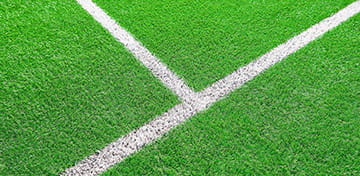
Grass courts are another natural surface, but it is the polar opposite of clay in that it makes for fast-paced play with a low bounce. Grass requires a special set of skills, including quick reflexes.
In fact, Wimbledon, the oldest tennis tournament in the world, is played on grass courts.
Advantages
A grass tennis court surface provides a traditional experience with a slower pace and lower bounce. This material inherently favours serve-and-volley play, encouraging players to approach the net and engage in agile, finesse-based tactics.
Maintenance
Maintaining grass courts can be a costly and labour-intensive endeavour. Regular mowing and watering are essential to keep the grass in good condition. As you can guess, this necessitates special equipment and personnel, so this is one minus of grass courts.
Disadvantages
Grass courts have some drawbacks. They require high maintenance due to the delicacy of grass. These courts need to be mowed, watered, and pest controlled. Additionally, the playing season on grass can be limited due to weather constraints, particularly during rainy periods.
Synthetic Grass Courts
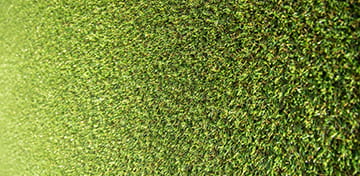
Synthetic grass courts are a different beast. They are referred to as “artificial grass” or “Astroturf courts” and are designed to mimic the look and feel of natural grass.
Combining the look of grass and easy maintenance, the synthetic grass tennis court surface offers a medium-paced game at an affordable cost.
Advantages
Synthetic grass courts provide a consistent and relatively low-maintenance playing surface. They offer a medium-paced game with a consistent bounce that is easy on all playing styles.
Maintenance
Maintaining synthetic grass courts typically involves regular cleaning and covering the surface to keep it clean from dirt and algae buildup. Occasional brushing or rolling may be necessary to maintain the desired playing characteristics. In general, synthetic grass courts generally require less maintenance than natural grass.
Disadvantages
While the synthetic grass tennis court surface material has its advantages, it also has some drawbacks. For instance, the surface can be somewhat abrasive and may cause damage to players’ shoes and clothing. Also, it may not provide the same level of authenticity and tradition.
Main Factors Influencing the Surface Selection
When deciding on the ideal tennis court surface, various factors must be considered. Each of the discussed tennis court surface types has its upper hand and following. Starting off with climate would be fitting because climate dictates the hardness of the balls and some courts.
For instance, clay courts may not be suitable for areas with frequent rain, while synthetic grass courts can be versatile in various weather conditions. Maintenance is another critical consideration, as we explained earlier. Given those factors and the role they play, we investigated further:
| 🌡️ Climate |
|
| 🛠️ Maintenance |
|
| 💰 Budget |
|
| 🎾 Usage |
|
| 🔋 Impact |
|
What should be noted is the importance of choosing the right tennis court surface. It’s worth remembering this decision involves considering factors such as climate, budget, impact, maintenance, and intended usage. Different tennis court surface types provide distinct advantages, and selection should align with the players’ goals.
Famous Matches and Players on Different Surfaces
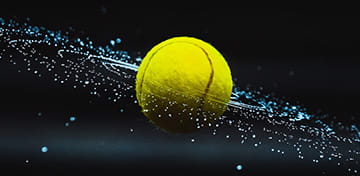
Ultimately, it should be noted that the influence of these different tennis court surface types on the legacies of tennis legends is undeniable. Each surface has noticeable characteristics that serve specific playing styles.
Take Wimbledon’s grass courts, for instance. The tournament has seen not one and two serve-and-volley players.
Pete Sampras and Roger Federer are two of the most notable names. Roger Federer, in particular, is celebrated not only for ambassadorship but also for orchestrating one of the greatest tennis comebacks in history.
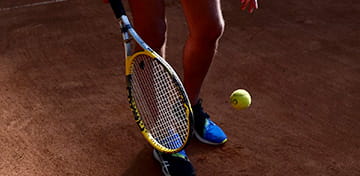
Meanwhile, the clay courts of the French Open have showcased the extraordinary dominance of Rafael Nadal. One of his rare defeats was against Robin Söderling in 2009.
On hard courts, versatile players like Serena Williams and Novak Djokovic have displayed their adaptability and stunning retours.
One of the most recent reminders of that is the match Novak Djokovic v Daniil Medvedev in 2023. The Serbian was too much for the Russian giant, always beating him to the punch.
FAQ
As we conclude this article dedicated to the different tennis court surface types, we’d like to address some of the most frequently asked questions we’ve seen on the topic. Below, we’ve provided concise and clear answers to these inquiries, so be sure to look.
